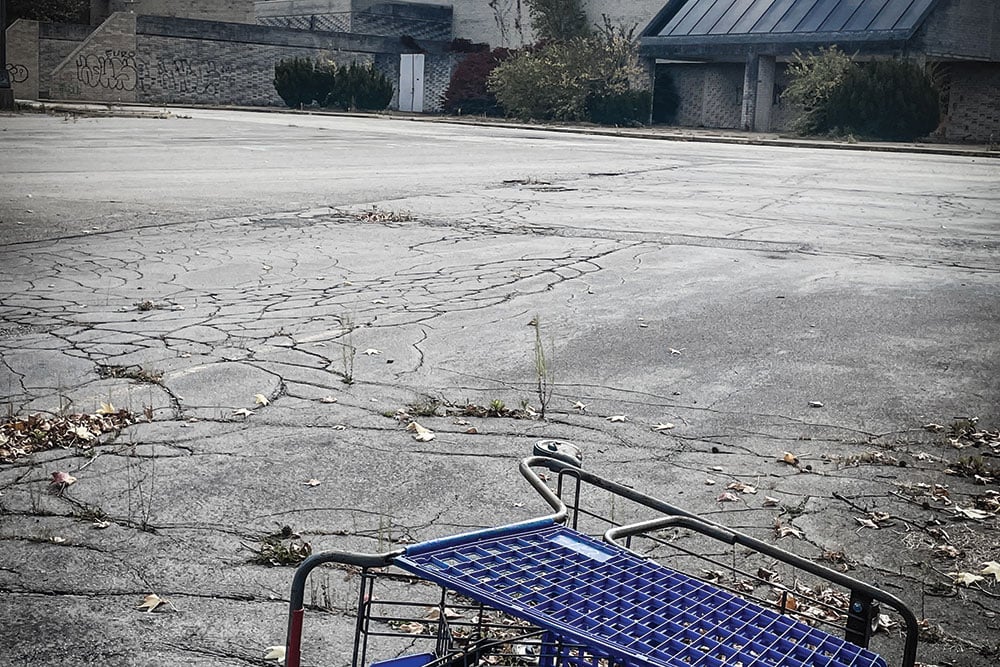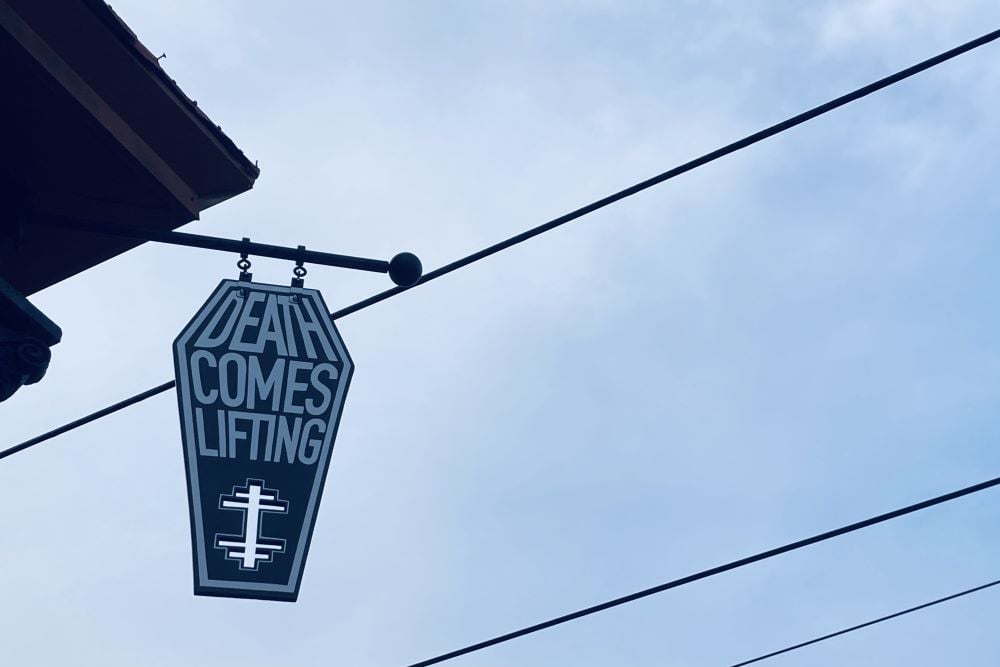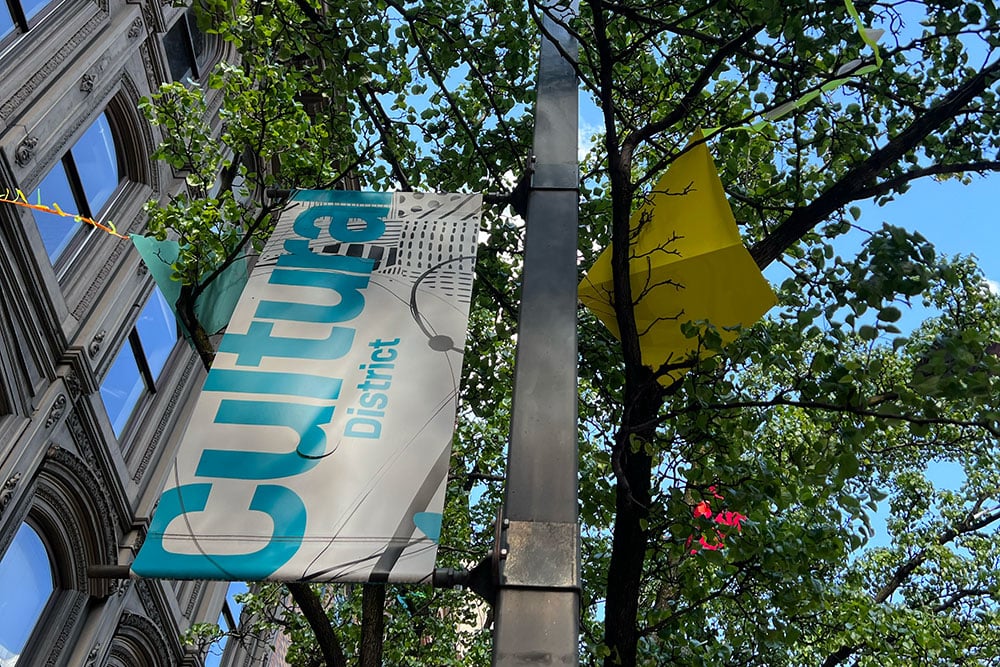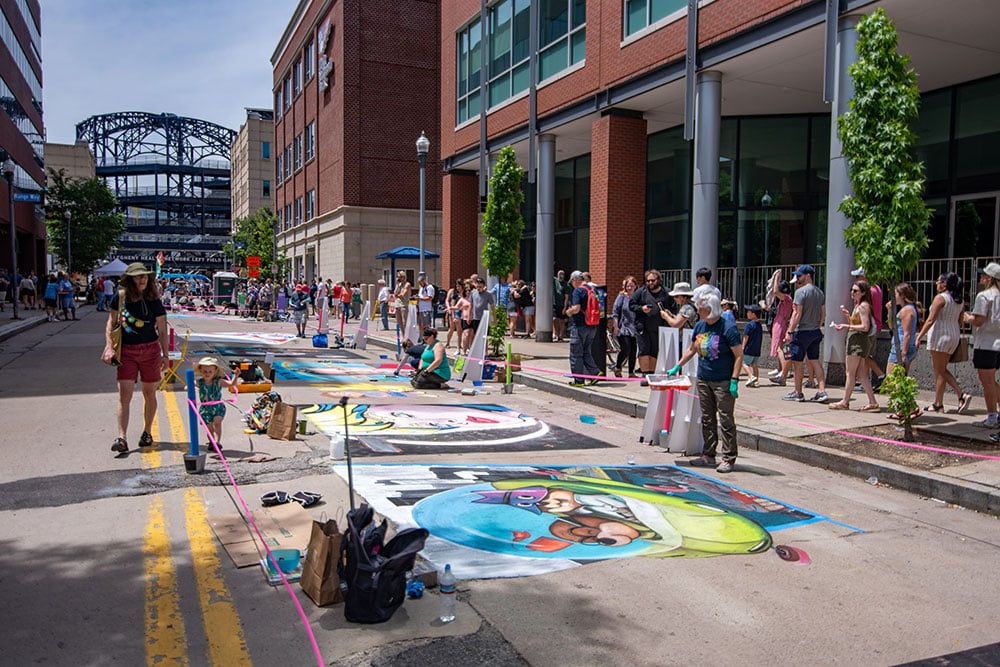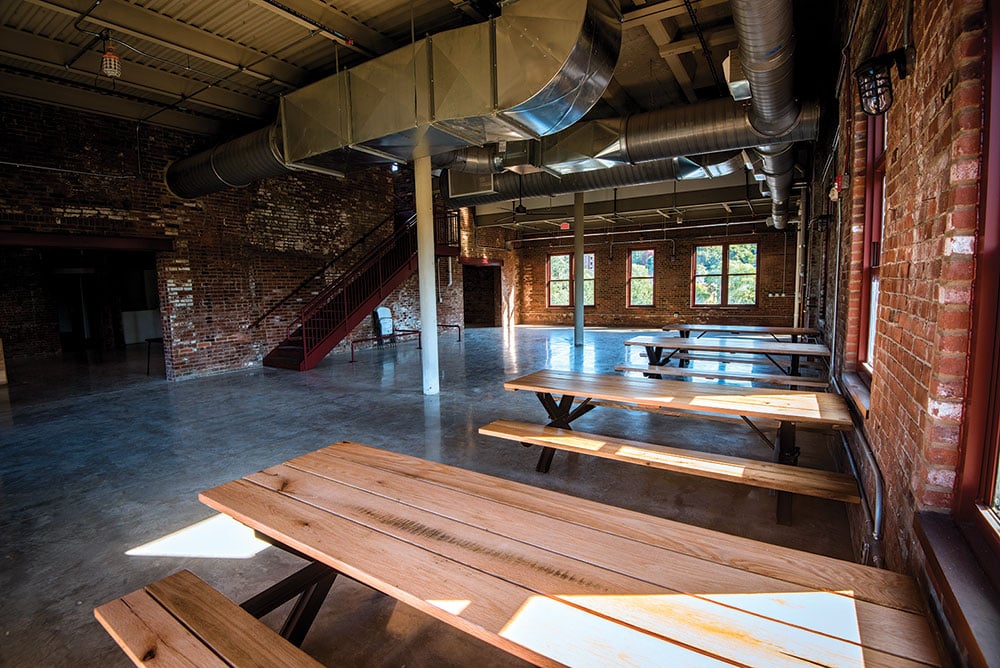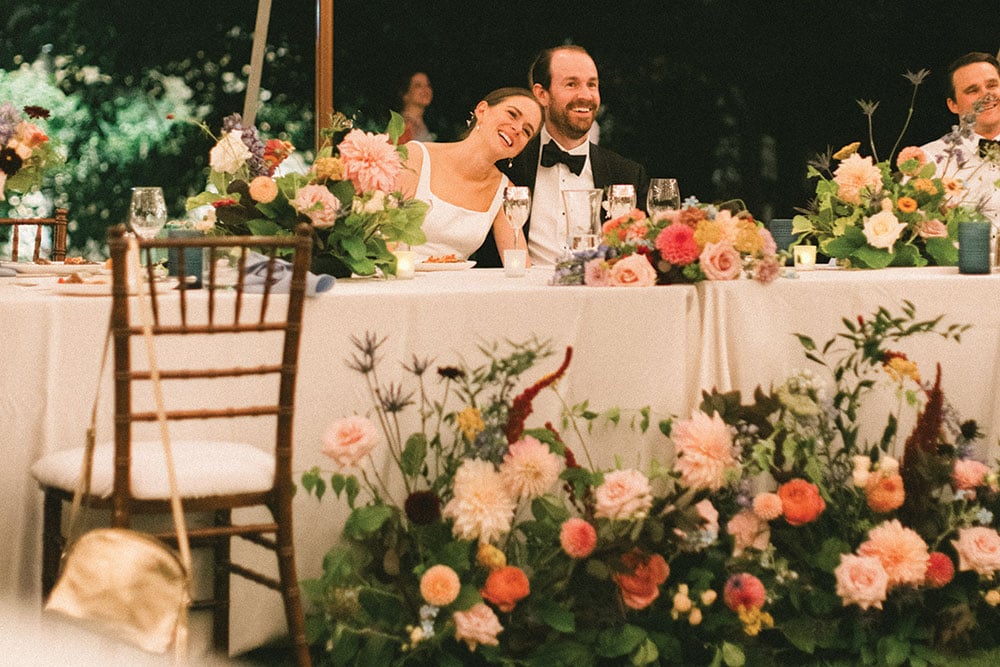Lore & Legends: Hidden Slices of History at Seven Pittsburgh-Area Universities
From wandering camels to ghostly bread, the odd things we discovered on campus.
UNIVERSITY OF PITTSBURGH
The Cathedral of Learning’s Curious Cabin
Secret attics, hidden passageways behind a fireplace and a magical bread oven — the tales surrounding the Cathedral of Learning’s Early American Room have attracted local TV channels and tourists throughout the years.
The 31 Nationality Rooms inside Pitt’s famous Cathedral of Learning have stood as emblems of cultural pride and diversity for more than seven decades. The brainchild of sociology instructor Ruth Crawford Mitchell (with the sponsorship of Chancellor John Gabbert Bowman), the Nationality Rooms program was designed to honor the contributions of the city’s many immigrant communities — and encourage them to send their children to the University of Pittsburgh. From the late 1920s onwards, representatives of different area ethnic groups have had the chance to design classrooms within the Cathedral of Learning to showcase their art, history and culture. The most recent addition, the Philippine Nationality Room, was completed in 2019.
Among these rooms, however, the Early American Room is an outlier. Although it was part of the first batch of rooms completed in 1938, the Early American Room was not sponsored and designed by a committee representing a particular nationality group but rather was a gift from George Hubbard Clapp, the president of Pitt’s Board of Trustees. Clapp’s family arrived in North America in the 1630s, and he wished to represent this part of his heritage through a room that interpreted the early settlement of New England.
To make the room resemble a 17th-century log cabin, the ceiling had to be built particularly low for realism, a factor that offered a unique opportunity for improvisation. A secret passageway — partially inspired by the attic of a house described in the novel “The House of the Seven Gables” — was installed, leading to an upstairs bedroom with a sloped ceiling. The second room can only be accessed by pulling a hidden lever in a closet next to the fireplace, which opens a door that at first appears to be a plain brick wall.
Though it was originally intended to serve as a functioning classroom like most of the Nationality Rooms, the Early American Room is now only an exhibit for tourists; it’s dim, and doesn’t offer enough seating for classes. It features donated or reproduced versions of an antique bread oven, spinning wheels and rifles. According to Nationality Rooms tour coordinator Michael Walter, the Early American Room might have been a precursor to other period rooms tracking American history inside the Cathedral — a plan by Ruth Crawford Mitchell that never came to be.
E. Maxine Bruhns, the director of the Nationality Rooms from 1965 to 2019, was convinced that her late grandmother haunted the Early American Room. The blanket on the bed in the attic was a donated wedding quilt, made by Bruhns’ grandmother in 19th century West Virginia. As the story goes, one day, a custodian had just finished making the bed when he heard a strange sound. When he turned back around, he saw the quilt turned up again — with the depression of a head visible in the pillow.
A number of strange reports from the Early American Room have surfaced over the years. Visitors have seen the cradle rocking by itself and felt cold spots in the room. Many have also smelled fresh bread baking in the antique pioneer oven. If the ghost of the Early American Room bakes bread in its free time, then we’ll count it as a welcome haunting.
ROBERT MORRIS UNIVERSITY
A Barn, a Theater and Two Gazebos
Originally operating out of a single classroom Downtown, Robert Morris University expanded to its current home in Moon Township in 1962, when it purchased a farm estate from the wealthy Kaufmann family. The Pine Hill Manor and Farm had previously been under the ownership of Oliver Kaufmann, whose uncles were founders of Kaufmann’s department store. One of the highlights of this new campus for Robert Morris University was the farm’s massive barn, which was first converted into the “campus activity building,” a venue for meetings and social events.
The barn’s true purpose wasn’t solidified until 1967, when faculty member Thomas Gaydos directed a production of Thornton Wilder’s one-act play “The Long Christmas Dinner.” The production was an instant hit; soon, more and more plays were staged in the building. This led to the creation of the popular Robert Morris Colonial Theater in the repurposed barn, which held around 12 shows a year, both by students and by members of the community. During this time, the barn continued to be a center of campus life — college social events were still held in the new theater space, and students would regularly gather to eat their lunches at a picnic area constructed outside.
Tragically, the barn burned down in a fire in 1986. The RMU community mourned the loss, with one student writing in a note in the yearbook, “I can only say that the barn was more than a building. It was a member of a very special family and like any other family member, we loved it very much.”
Just one year later, University President Charles Sewall commissioned the building of a gazebo at the spot that the barn had stood, calling it the Alumni Commons. The gazebo soon became the “living room” of campus, featuring a bonfire pit, sand volleyball courts and an outdoor TV that students often used to watch sporting events. It has since been the venue of choice for pizza parties, student concerts, karaoke nights and sessions of “Dungeons & Dragons.”
In 2012, the original gazebo was deemed structurally unsound; a replacement was built out of steel. To this day, it remains a center of the school’s social life, while the Colonial Theater Program established in the now-destroyed barn continues to put on productions elsewhere on campus. To celebrate the 50th year anniversary of the Colonial Theater in 2017, members re-staged “The Long Christmas Dinner” as a free holiday show.
According to John Locke, RMU’s senior director of student involvement and theatrical productions, “Every student who’s been on campus since 1962 has made a memory on that spot, whether it’s the barn, the old gazebo or the new gazebo.”
CHATHAM UNIVERSITY
Singing Chatham’s Praises
While building dreams anew, seeking for all that’s true, our alma mater, we pledge our faith in you. Like cornerstones of temples, polished and gleaming, strong and secure. We pledge our lives to be mansions of beauty to endure.” Reading the lyrics of Chatham’s Alma Mater, one may think that it was composed at the time of the university’s founding in 1869, perhaps by a former headmaster or faculty member.
It’s a bit more contemporary than that, however, with competitive origins. The Alma Mater was the work of Katherine Pyle, the editor-in-chief of student newspaper The Arrow — and it was first presented during the 1936 edition of the Chatham Song Contest.
Originating early in the 1920s, the Chatham Song Contest was a long-beloved tradition on campus (although it no longer exists in an official form). It was a chance for classes to perform both original and parody songs honoring the school, competing for a prize; initially, winners received a five-pound box of candy, with the prize later changing to a gold cup engraved with a list of former winners, passed down through generations.
The original guidelines for the contest demanded that each class perform a serious song, a humorous song and a song that was original both in lyrics and in music. Later, students were also expected to incorporate lyrics from the Alma Mater. However, these rules grew loose over the years; the standard format eventually shifted to a single parody performance, delivered as part of the larger Battle of the Classes event, in which the lyrics of a popular song were changed to incorporate jokes about Chatham life.
Past highlights include a rewrite of Madonna’s “Like a Virgin” titled “Like a Cougar”, a nod to Chatham’s mascot. In 1953, when an allegedly haunted building on campus was torn down, the freshman class rewrote the folk song “Molly Malone” in the perspective of the ghost mourning the loss of its home. In the 1960s, according to archivist Molly Tighe, the Song Contest entries became more “psychedelic,” recorded on LPs with groovy cover designs.
Given that the Song Contest became a time for laughs and friendly competition before it was finally phased out, not many current students at Chatham know that it was out of this tradition that another campus mainstay — the Alma Mater — was born. As recorded in “Chatham College: The First Ninety Years,” a 1959 history of the university, Katherine Pyle wrote the lyrics to the song alone in the drawing room of Woodland Hall on a cold fall night. She is said to have been reflecting on the experience she had attending Chatham in the wake of the Great Depression, thinking back on the college years that she would soon leave behind. The music was then composed by the senior class president, Juliet Weller Gump, and the future Alma Mater was complete.
At the Song Contest, Pyle and Weller’s song came in first place. Then, in the spring of 1937, a committee of students and alumni voted for it to become the official Alma Mater. Since then, it has been sung by generations of Chatham students, while the words that Pyle wrote that night in Woodland Hall were many times woven back into the lyrics of other Song Contest entries.
CARNEGIE MELLON UNIVERSITY
Happy Hump Day from the Carnegie Camel
With a $100 camel costume from Amazon and a dream, two sophomores at Carnegie Mellon University created a zany tradition that has already attained the status of legend.
Starting in the fall of 2013, if you walked through the school’s campus on a Wednesday, there was a good chance you might be approached by a camel yelling, “Happy Hump Day!” The iconic “Carnegie Camel” visited lecture halls, job fairs and even ran the school’s annual Donut Dash fundraiser — a 2-mile race with a break to eat a half-dozen donuts — brightening the days of hundreds of CMU students along the way. Though the original students inside the two-person camel suit wish to keep the mystery alive and remain anonymous, the back half of the Carnegie Camel spoke to us about the history of their hump-day adventures.
The idea for the camel emerged in September of their sophomore year, when these two close friends were up late in their dorm. They began discussing how funny it would be for someone to dress in a camel costume and yell “hump day” at passersby; before they knew it, they had ordered the costume online. The suit, as the camel tells it, was a “piece of crap.” For the person in the hump to see, they had to cut a tiny hole in the fabric. Going down stairs in costume was a dangerous challenge.
Despite the issues with visibility, on the following Wednesday, the two friends got inside the camel and took the act to the streets, as they continued to do every week that semester.
Though the Carnegie Camel’s outings became less regular over the years, these founding members continued to get into all types of “shenanigans” until their graduation. Both halves of the camel were members of the cross country and track teams; they would often show up to meets in costume to cheer people on, even running 5K races while stuck together inside the thick camel suit. Plans emerged for the Carnegie Camel to run the Pittsburgh Half Marathon, hoping to set a Guinness World Record, but the suit was deemed “too hot and sweaty.”
One day, the camel made a visit to CMU’s extracurricular fair. It ended up passing by the booth for Catholic student groups, which the back half of the camel was involved with at the time. A priest asked, “What are you, a horse?” Not able to see properly out of the costume, and only making “educated guesses” about her surroundings, the back half of the camel replied to the priest, “What are you, an idiot?”
After both halves of the original Carnegie Camel graduated, the costume was stored in the women’s locker room for the cross country team. Two other girls reportedly continued the life of the camel for a year or two, but the costume had reached the end of its lifespan, becoming so ratty and dirty that it had to be thrown away.
The back half of the camel’s favorite memory in the suit occurred just a few months before her graduation. She had worked as a campus tour guide for three years, and asked her boss if she could give her final tour in the camel costume. In April of 2016, the Carnegie Camel led more than 30 prospective students around the school, describing the meal plans and student-to-faculty ratio.
“People were coming up and asking the camel, ‘Is the environment competitive at this school?’”
CARLOW UNIVERSITY
Fort Carlow
The surprising history of Carlow University’s West Oakland campus dates back to the Civil War, when Pittsburgh was rapidly fortified to defend against a potential invasion by the army of Confederate general Robert E. Lee. In 1863, while Lee was marching northwards into Pennsylvania, Union leaders were unsure of his intended direction. After some speculation and rumors, Pittsburgh became considered to be a likely target as a center of wartime production and arsenal. A telegram from Edwin Stanton, the Secretary of War at the time, warned a local statesman that “the latest intelligence indicates that you have no time to lose organizing and preparing for defense.”
To prepare their city for this hypothetical invasion, Pittsburgh’s factory owners paused their usual activities in order to divert their workforce to quickly construct forts and trenches. One such fort was placed at the current site of Carlow University — as a high vantage point with a view of the river and the empty hillside below, it was an ideal spot. This fort was called Fort Zug, and was said to be located on a ridge behind Carlow’s current Fifth Avenue entrance. According to an issue of the Daily Evening Gazette from June 1863, 50 local men were assigned to be stationed there.
The fort was named after Christopher Zug, who was the director of Zug & Painter, one of the many Pittsburgh companies that donated their workforce to the construction of the fortifications. An industrial magnate, Christopher Zug oversaw a number of the city’s iron mills and nail manufacturers.
Despite the time and financial investment put into the project, Fort Zug — like every other new addition to the city during this rush for fortification — never saw battle. Lee was defeated in Gettysburg that same year, which put a definite end to his journey through the North. Once the Civil War formally ended, Fort Zug was abandoned and eventually torn down, with no remnants surviving today. Decades later, in 1929, the Sisters of Mercy founded Carlow University on the same spot where the fort once stood. All that’s left is a fascinating story.
DUQUESNE UNIVERSITY
Furious Ghosts of the Civil War in Old Main
Constructed at the site of an old hospital and a stop on the Underground Railroad, it is no surprise that Duquesne University’s “Old Main’” is rumored to have ghosts roaming its halls. Though the legends of hauntings at Duquesne’s historic campus are numerous, the most famous by far surrounds one of its oldest surviving buildings, which was dedicated in 1885 by the school’s Spiritan founders.
The story derives from the history of the land that Old Main is built on — a plot on the Bluff with a clear view of the river valley below. In the 1850s, surgeon Albert G. Walter built a two-story hospital on the site. A strong abolitionist, Walter soon transformed the hospital into a stop on the Underground Railroad; its location at the then-highest point on the Pittsburgh skyline made it easy to spot. He is even rumored to have ordered the construction of brick tunnels that are still present today, hidden below Old Main.
From the 1850s until the beginning of the Civil War, Walter hid escaped slaves in his hospital. One night, as the legend goes, an enslaved man arrived at the hospital doorstep with shackles still attached to all of his limbs and cut pieces of chain hanging off. Before he could be taken inside and treated, he collapsed in the doorway, dying soon after.
Once the Civil War broke out, Walter’s hospital treated a handful of injured soldiers, some of whom died on site. A few of these were captured Confederate fighters, who were shipped to Pittsburgh due to its close relative location to the South.
Soon after the war, Walter caught pneumonia from a patient and died. The hospital was put up for sale and purchased by the Holy Ghost Fathers, who had founded Duquesne University just seven years prior, in 1878. A grand construction project ensued. The old hospital was jacked and moved into a lot across the street, becoming an office and dormitory known originally as St. John’s Hall, while Old Main was constructed from scratch in its place as the new center of the university.
As years passed, stories began to circulate about strange noises and apparitions in both St. John’s Hall and Old Main. Most notably, both students and priests began to report the sound of fighting from the basements of the two buildings, with some even hearing a Southern accent and the rattling of chains. People came to believe that the ghost of the escaped slave who had died at the hospital was battling the ghost of a Confederate soldier, endlessly at war with one another in the afterlife. In the 1920s, according to university archivist Tom White, Duquesne’s freshmen were taken into the basement and left overnight after being told the story as part of an initiation ritual.
St. John’s Hall — renamed St. Mary’s Hall — eventually became the living space for seminarians, who were overseen by the Holy Ghost Fathers and priests. One night, the noises of the ghosts were supposedly so loud that no one could speak over them. A German priest became furious, storming into the basement and yelling, “I’m coming to drive you out!” The story goes that the ghost of the Confederate soldier replied in a Southern accent, “I know all about you, you don’t scare me!” The seminarians, still above ground, heard the splashing of holy water and shouting as the priest performed an exorcism. After half an hour, the priest reappeared, and the Confederate soldier’s ghost has reportedly been silent since.
In 1971, St. Mary’s Hall was torn down, with Bayer Hall built in its place. With this, the last remnants of Dr. Walter’s hospital were destroyed — yet the spirit of the enslaved man is still said to haunt Old Main, wandering and searching for peace.
POINT PARK UNIVERSITY
Lawrence Hall’s Judicial Spirit
Right off of the Boulevard of the Allies, the looming red-brick dorm building known as Lawrence Hall houses more than just students — it also is the haunting ground of Point Park University’s most famous ghost. The “Lawrence Hall Shuffler” is apparently responsible for a number of strange happenings in the building, most notably the mysterious sound of shuffling around the hallways, like that of feet or a broom.
Particularly in the building’s higher floors, paranormal sightings by students are common. Objects are reported to move on their own, while students hear disembodied voices and tapping on their doors. Closets burst open, electrical appliances turn on without warning, and doors lock and unlock themselves.
Davion Heron, a former RA at Point Park, felt convinced that Lawrence Hall was haunted during his time living in the building. He experienced a number of unexplainable occurrences, often hearing noises in the long, empty hallways. Once, he woke up in the middle of the night and saw a menacing dark shadow in the corner of his dorm room; he believed it to be the Shuffler itself.
Some speculate that the Lawrence Hall Shuffler is the ghost of the former Pennsylvania State Supreme Court Justice Michael Angelo Musmanno, who lived and died in the building. Before it was bought by Point Park, the structure was known as the Sherwyn Hotel. According to Haunted Pittsburgh, Musmanno lived in Suite 1625 of the hotel until the end of his life. Point Park began renting floors at the hotel for university use from 1960 onwards, until they eventually purchased the building in 1967. They did not force Musmanno to leave, however, allowing him to continue residing in his beloved suite while college students settled into the rest of the building.
In 1968, just a year after the transformation of the old hotel, Musmanno had a stroke and died in his room inside the newly minted Lawrence Hall.
In his lifetime, Musmanno served as a coal loader, a naval officer, a presiding judge on the Nuremberg war crimes tribunal and a 17-year member of the state’s Supreme Court. He authored a number of books, including historical novels and dissections of past cases. Most notably, he was a crucial part of the defense for the anarchists Sacco and Vanzetti. A supporter of civil rights and a record-setter for the greatest number of dissenting opinions filed in the court, Musmanno is remembered for his colorful personality, which came through even in his legal writings. If he truly is the famed Lawrence Hall Shuffler, aspiring lawyers at Point Park should listen closely to the “strange noises” they hear at night — the ghost might as well be reflecting on past trials while gliding through the halls.











